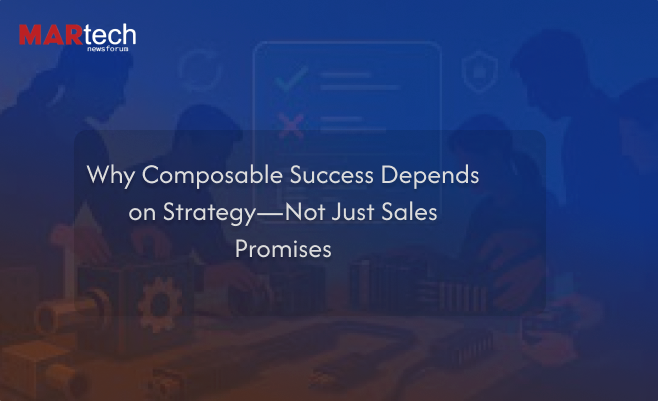
The rise of composable architecture in the marketing technology space is no longer just a trend—it’s becoming the dominant approach for modern digital ecosystems. The promises are attractive: modular tools, faster innovation, reduced vendor lock-in, and greater scalability. However, as more companies shift toward composable martech stacks, a critical issue has surfaced: technology alone doesn’t guarantee success.
In reality, many organizations are finding that without a clear strategy, composable systems can lead to more complexity, not less. It’s not the tools that fail—it’s the absence of a framework guiding how they’re selected, implemented, and integrated.
The Sales Pitch vs. the Operational Reality
Composable architecture is often marketed as a fast path to flexibility. Vendors highlight the ability to “choose best-of-breed” tools and integrate them as needed. In theory, this empowers marketing teams to build the exact stack they need.
In practice, however, the promised flexibility can quickly become fragmentation.
When teams buy into composable promises without first aligning on business goals, processes, data models, and user experience strategy, they end up with disconnected tools that don’t communicate effectively. The result is operational inefficiency, disjointed customer experiences, and rising technical debt.
Composable isn’t just about modular technology. It’s about modular thinking, governed by a cohesive vision.
Why Strategy Has to Come First
Composable success requires a strategy-first approach, where architecture is planned around business outcomes—not vendor feature sets. Organizations need to define:
- Business goals: What are we trying to achieve across marketing, sales, and customer experience?
- Customer journey needs: How do we ensure tools align to support seamless, personalized journeys?
- Data and integration architecture: How will data flow across systems in real time?
- Governance: Who owns what? How is tool usage monitored and optimized?
- Team readiness: Are people trained to use composable tools in ways that support agility?
Without these answers, a composable stack becomes a patchwork of disconnected components—each one requiring maintenance but delivering limited value.
Common Pitfalls in Composable Adoption
- Buying Too Many Tools, Too Quickly
In the excitement of going composable, companies often acquire multiple tools without ensuring integration and operational readiness. More tools don’t equal more capability—they often equal more confusion. - Over-Reliance on IT or Marketing Alone
Composable systems require collaboration between marketing, IT, data, and product teams. When only one function drives implementation, blind spots emerge—whether it’s around user experience, security, or scalability. - Lack of Clear Ownership
When no single team or role is accountable for the architecture and governance of the stack, issues go unaddressed. Tools get underused, misconfigured, or duplicated across departments. - Integration Gaps
Composable platforms depend on APIs, event-based architectures, and shared data models. If integration is poorly planned or executed, the system’s flexibility becomes its greatest weakness. - Ignoring Change Management
Swapping monoliths for composable tools changes workflows, responsibilities, and skill requirements. Without structured change management, user adoption falters and value is lost.
The Strategic Foundation of a Composable Stack
To make composable architecture work, the foundation must be strategy—not software. This means:
- Aligning on a long-term digital vision
- Documenting workflows and use cases across departments
- Standardizing how data is defined and shared
- Creating design systems and governance playbooks
- Defining KPIs linked to composable benefits (e.g., time to market, campaign velocity, customer personalization)
This strategic groundwork allows modular tools to be connected in meaningful ways—building an ecosystem that evolves with the business rather than constantly breaking it.
From Tools to Transformation
When composable architecture is implemented strategically, it doesn’t just offer better tooling—it supports transformation. It enables:
- Faster launch of personalized campaigns
- Real-time customer data usage across channels
- Agile experimentation with new platforms and channels
- Incremental upgrades without major platform overhauls
- Better collaboration across marketing, product, and IT teams
But none of that happens by accident. It requires a roadmap, stakeholder alignment, and disciplined execution.
Final Thought
Composable martech stacks promise agility, speed, and control—but only when they are implemented with clear strategy and cross-functional alignment. Buying into sales promises without asking the hard questions around architecture, governance, and business objectives leads to costly missteps.
Composable success doesn’t start with technology. It starts with strategy. When organizations lead with a clear plan, the promise of composability becomes reality—not just marketing.